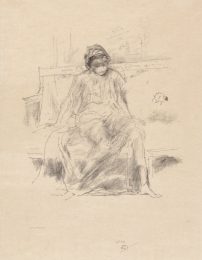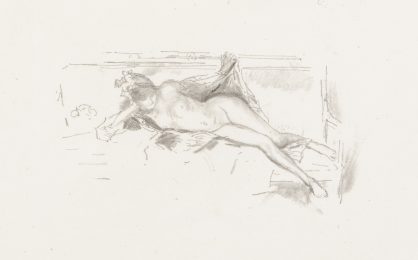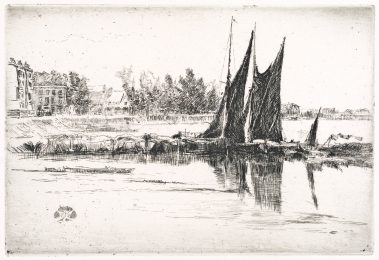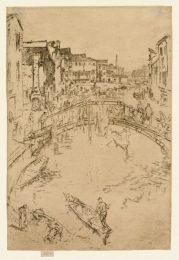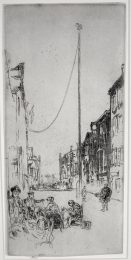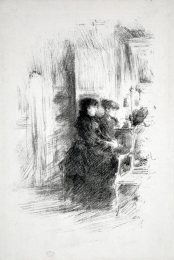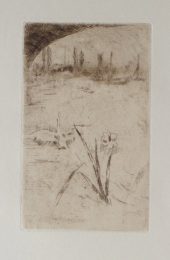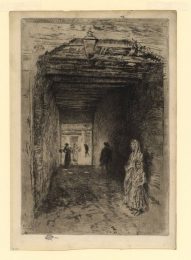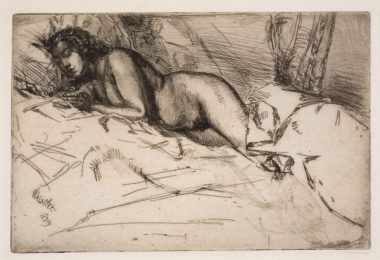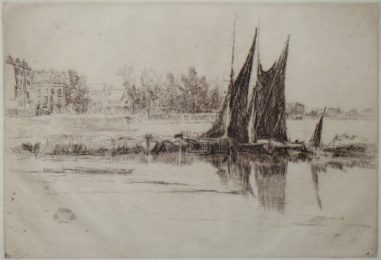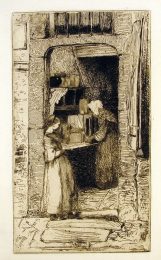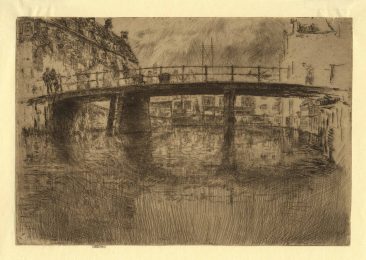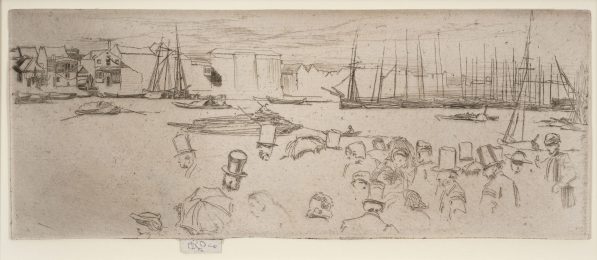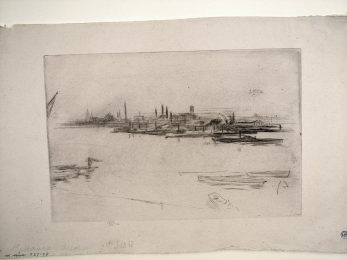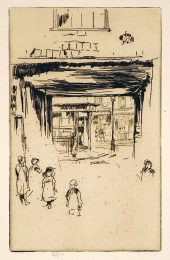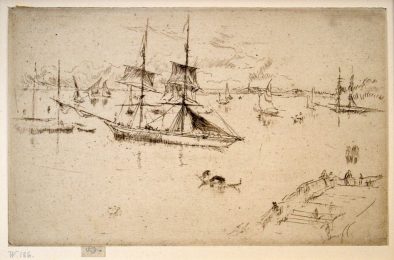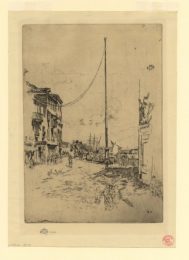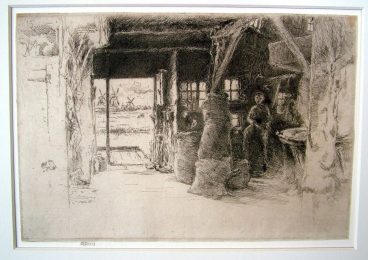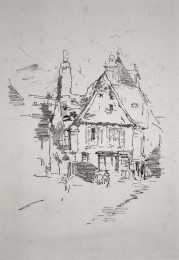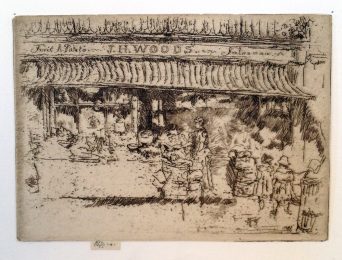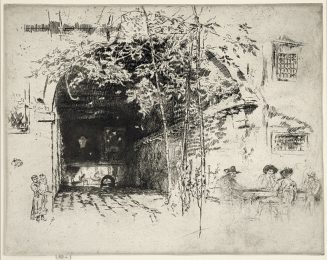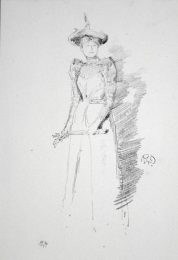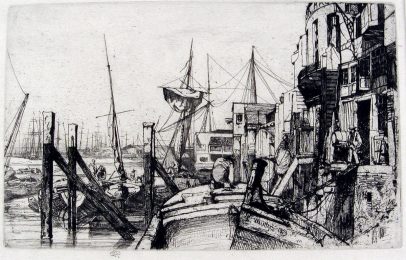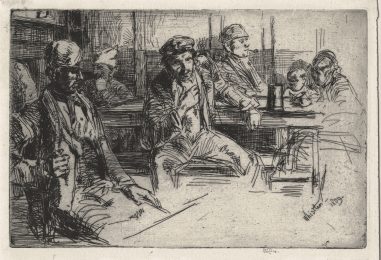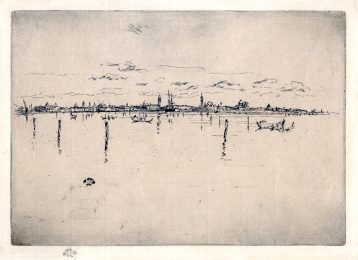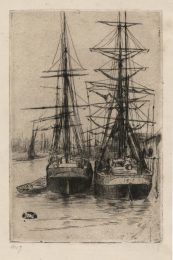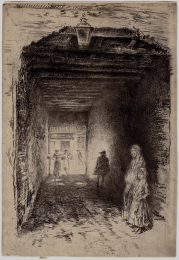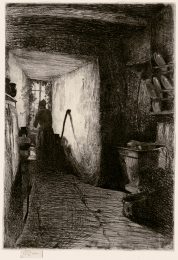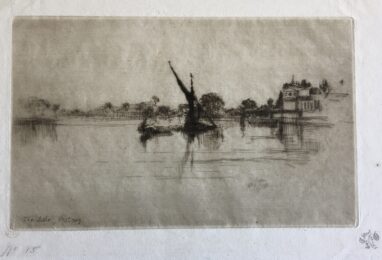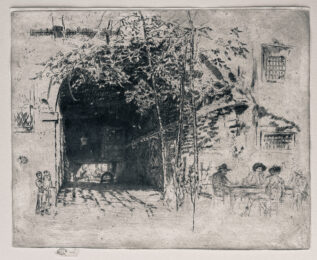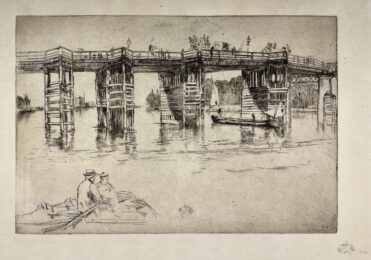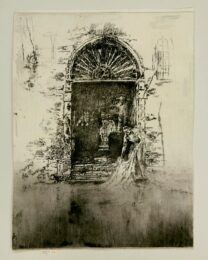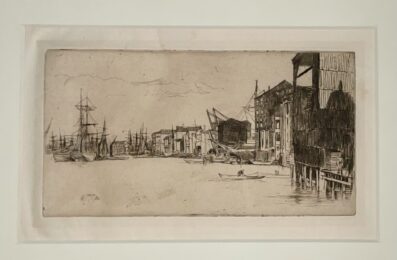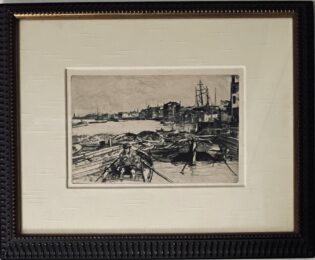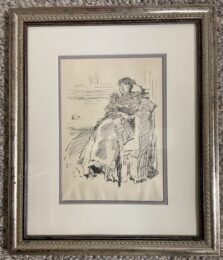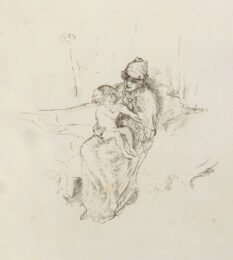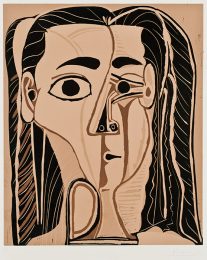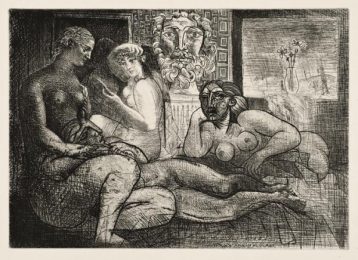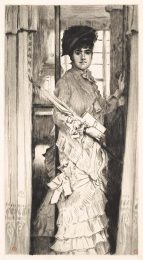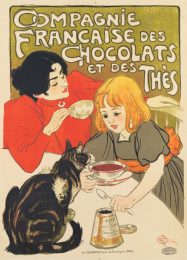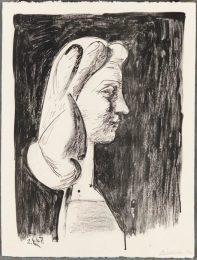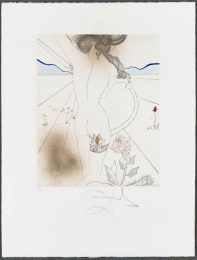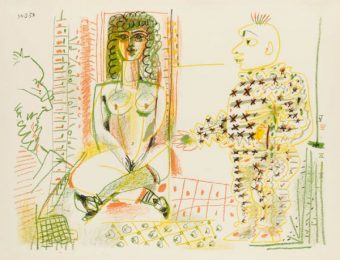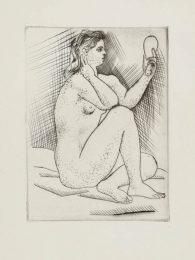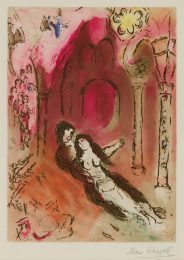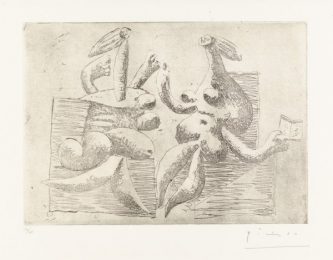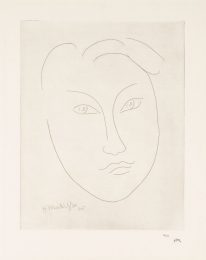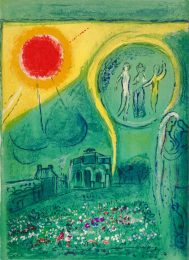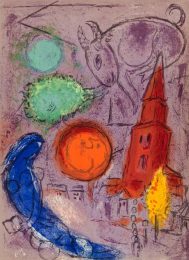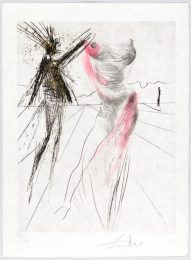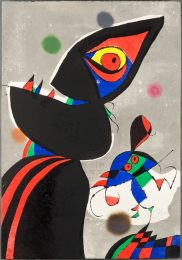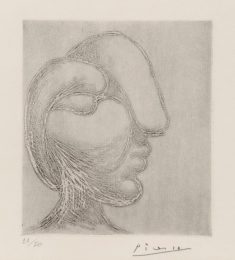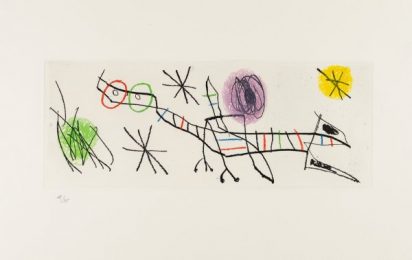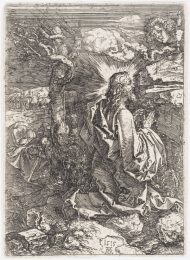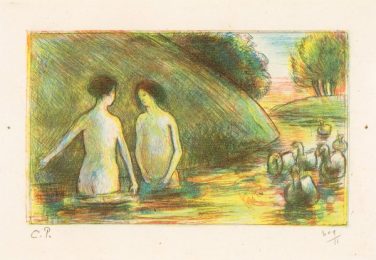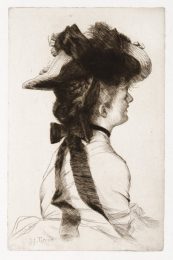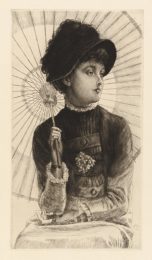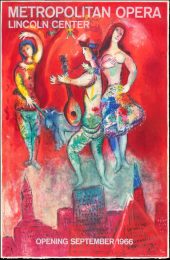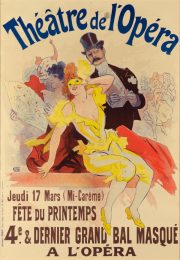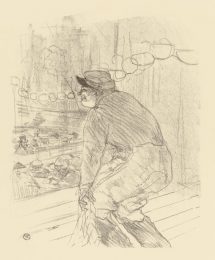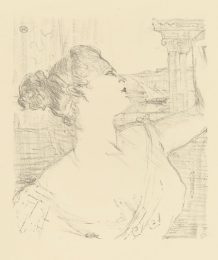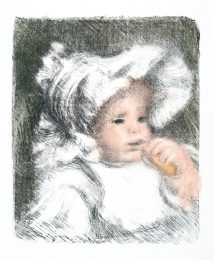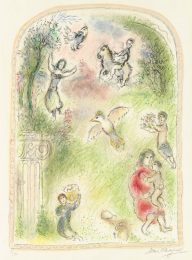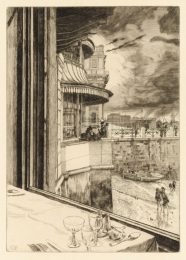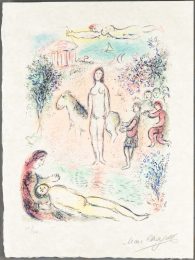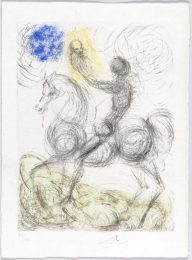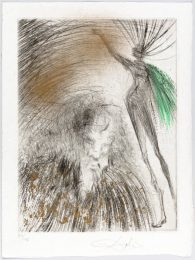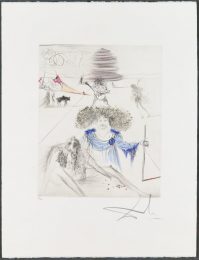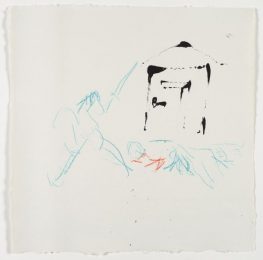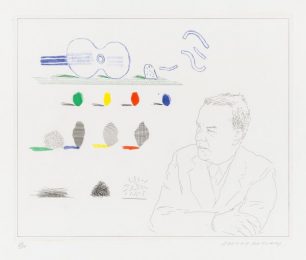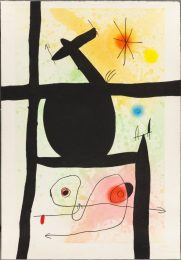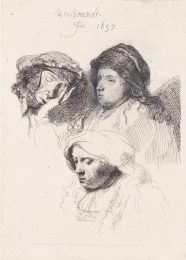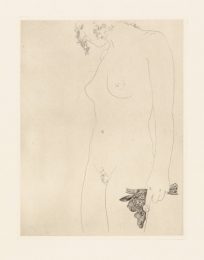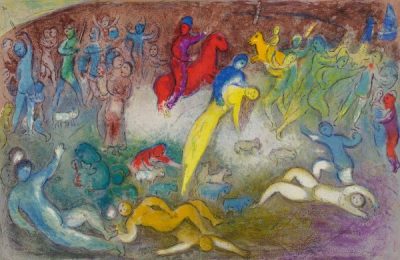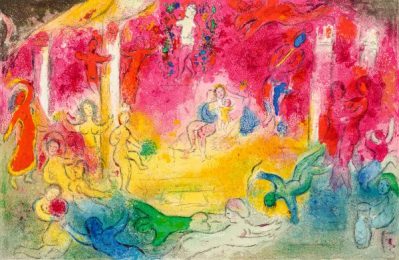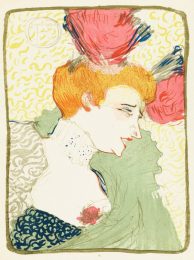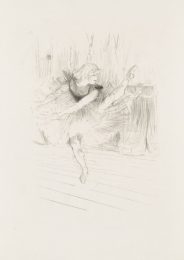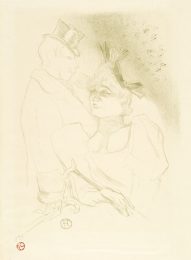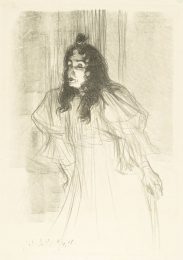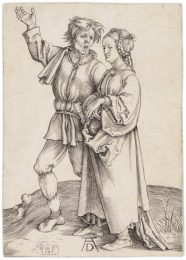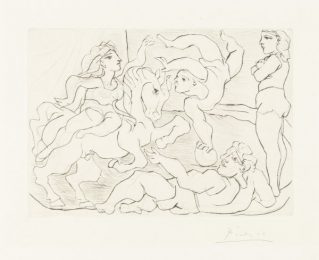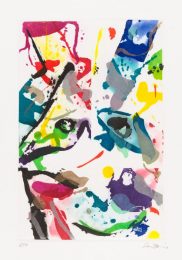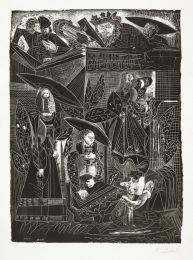Details — Click to read
Original drypoint printed in black ink on laid paper.
Signed and dated in the plate lower left Whistler 1859.
A strong, dark impression of Kennedy’s tenth and final state Of this extremely scarce etching, printed after the addition of the vertical lines below the window and the burnishing of the hands, hair and face preparatory to remodeling (which was never done), and the addition of the cancellation lines.
Catalog: Kennedy 58 x/x; Mansfield 58; Grolier Club 56; Wedmore 54; Thomas 56.
11 3/8 x 7 7/8 inches
Sheet Size: 12 5/8 x 9 3/4 inches
A small tear in the sheet at the left edge well away from the image, minor losses at the extreme sheet edges upper right and lower left, backed with Japan paper for support, otherwise in excellent condition, printed on a sheet with wide margins
Literature regarding this artwork: Katherine A. Lochnan, The Etchings of James McNeill Whistler, Yale University Press, New Haven & London, 1984, no. 128, p. 106 (ill.).
After spending about two months at Wapping on the Thames in London, Whistler left for Paris on October 6, 1858, remaining there until shortly before Christmas. During this ten-week period he experimented with the drypoint technique for the first time.
Whistler greatly admired the special qualities of drypoint, a process more closely related to engraving than etching, in which a steel or diamond tip needle is used to draw on an ungrounded copper plate. Drypoint can be distinguished from other intaglio techniques largely by the distinctive copper ridge, or “burr”, which is forced up on either side of the needle as it is pushed through the copper. This traps the ink and prints with a velvety richness which varies with the depth of the drypoint line.
Whistler made three drypoint portraits of women on the trip to Paris, including “Finette.” In these prints Whistler began to explore the decorative possibilities of the full-length portrait, drawing on the tradition of sartorial splendor which he saw in Anthony Van Dyck, Wenceslaus Hollar and Velasquez.
Whistler gave his subjects monumentality by selecting a low vantage point and emphasizing the richness of their costume. Of the three drypoints, he preferred “Finette”, and “guarded his proofs jealously.” The dark figure which dominates the picture space recalls Hollar’s 1640 etching “The Winter Habit of an English Gentlewoman,” and impression of which was in his brother-in-law Francis Seymour Haden’s collection. The mask which Whistler included among the items in the prop box to the right of Finette may have been intended for use during the forthcoming carnival season; it recalls the facial masks worn with winter costume in Hollar’s prints, and the miscellaneous accoutrements found in British aristocratic portraiture.Fin



